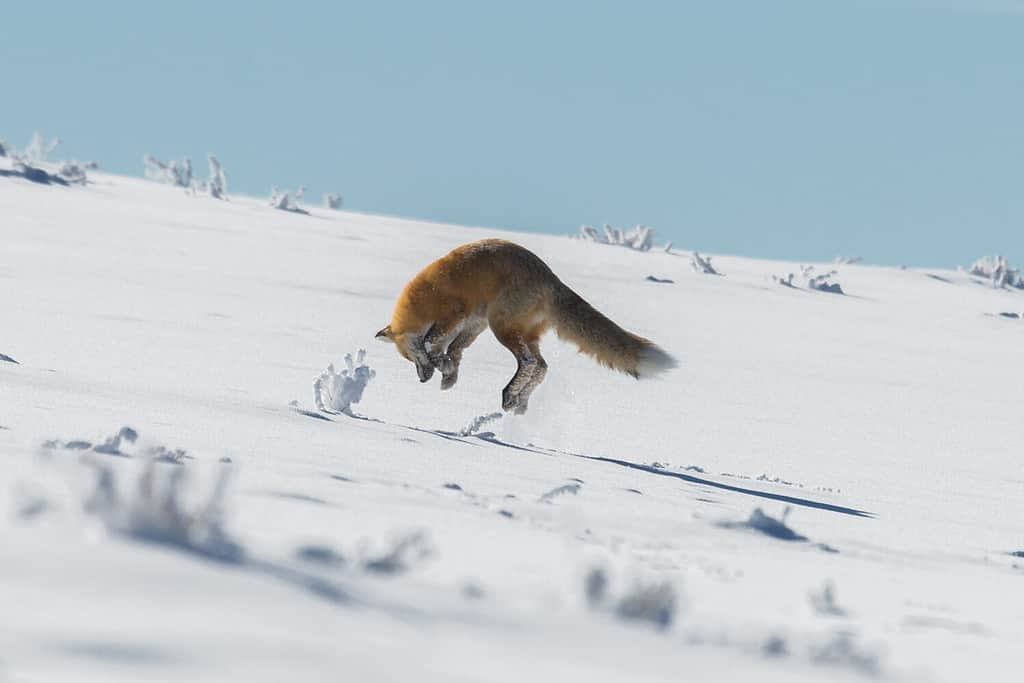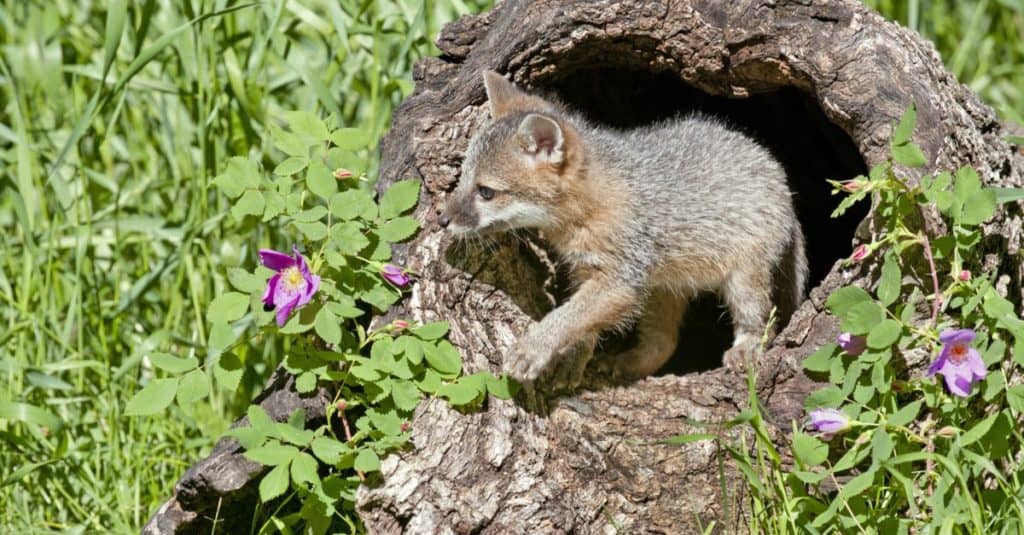Virginia is well-known for its beautiful landscape, which is also home to a diverse wildlife population. Among the many critters running through the Commonwealth is two species of foxes. These fascinating creatures are captivating. They have a cunning nature and distinctive appearances. Whether you’re a wildlife enthusiast, a nature lover, or simply curious about the wildlife in Virginia, this article will provide valuable insights into the world of foxes in the region. So let’s dive into an exploration of these fascinating creatures.
Red Fox (Vulpes vulpes)
The red fox is the most widespread fox species in Virginia, not to mention the entire Northern Hemisphere. It belongs to the Carnivora order and is known for its reddish-orange fur, white underbelly, and a bushy tail with a white tip. This beautiful animal has a slender body and pointed ears, which aid in its excellent hearing. They are adaptable creatures that can thrive in various habitats, including forests, grasslands, suburban areas, and even urban environments.
Distribution
Red foxes live all over Virginia, from the Appalachian Mountains to the coastal plains. It is possible to spot them in rural areas, suburban neighborhoods, and even the heart of cities. Their ability to adapt to different environments has contributed to their success in Virginia’s diverse landscapes.
Habitat and Behavior
Red foxes live in many diverse environments. While they are most often seen in mated pairs, they also occasionally travel in small family groups. They are opportunistic predators. Their preference is to hunt for small rodents. However, they don’t shy away from targeting animals like squirrels, reptiles, rabbits, and birds. And from time to time, they do partake in veggies or fruit.
Unfortunately, red foxes are also easy prey for larger predators from the land and sky. Birds of prey, like golden eagles, will happily snatch up an unwitting fox. Likewise, land animals like coyotes, wolves, and felines regularly hunt red foxes.
Foxes are most active during the early morning and evening hours. During the height of the day, they seek shelter in dens. These may be in burrows, hollow logs, or even under buildings.

This red fox shows off its natural hunting ability, even in the coldest months.
©Michelle Holihan/Shutterstock.com
Gray Fox (Urocyon cinereoargenteus)
The gray fox, belonging to the Canidae family, is another fox species found in Virginia. It is smaller than the red fox and has a unique coloration. Gray foxes (also known as grey foxes) have a mixture of gray, white, and tan fur. They have a black stripe running down their back to the tip of their tail, which helps distinguish them from their cousins.
Distribution
Gray foxes can be found throughout Virginia, although they are generally more common in forested areas. They prefer habitats with dense vegetation. So they are often seen near wooded areas, brushy fields, and stream edges. They are the only fox species that developed climbing abilities. Their hooked claws allow them to take refuge in trees when threatened.
Habitat and Behavior
Gray foxes prefer habitats with dense vegetation. They are the only fox species that live as far south as South America but are most commonly found in North America.
Gray foxes have a more omnivorous diet that varies depending on where they live. Some of their preferred food includes small mammals, birds, insects, and plant matter. They also adore fruit.

Gray foxes are adorable, especially as kits.
©Scenic Shutterbug/Shutterstock.com
Interactions with Humans
Foxes play an essential role in maintaining the ecological balance within their habitats. They help control populations of small mammals and insects, contributing to the overall health of ecosystems. But they have also played a critical role in recent human history.
Due to their large population numbers and widespread habitats, foxes have historically been vital to the fur trade industry (and still are). They also appear in many mythological stories and folklore across the globe.
In recent years, foxes have begun mingling in suburban and urban areas. So it is not uncommon to see one of these skittish creatures wandering down a road or through a field near Virginia homes. However, it’s important to remember that foxes are wild animals. They should always get treated with caution and respect. Feeding foxes is strongly discouraged. Once a fox receives an easy (and tasty) meal, it can become dependent on the free handouts. If that happens, it will alter their natural behavior, make them too comfortable around humans, and could create potential conflicts.
Also, keep in mind that since foxes are predators, your small domestic pets are not off-limits. Keeping them supervised and secured can help prevent potential negative interactions between them and foxes.
Be aware of local regulations in Virginia regarding wildlife conservation and management. If you encounter a fox, observe it from a distance and do not attempt to approach or handle the animal. If there are concerns about a fox’s behavior or potential conflicts, contact your local wildlife authority or animal control agency.
Foxes in Virginia bring a sense of wild beauty and intrigue to the state’s natural landscapes. As we coexist with foxes and other wildlife, it’s important to appreciate their role in the ecosystem and maintain a respectful distance. By understanding their habitats, behaviors, and interactions with humans, we can foster a harmonious relationship with these captivating creatures, preserving the natural balance of Virginia’s wildlife for generations to come.

Foxes play an essential role in maintaining the ecological balance within their habitat.
©RT Images/Shutterstock.com
The photo featured at the top of this post is © Danita Delimont/Shutterstock.com
Thank you for reading! Have some feedback for us? Contact the AZ Animals editorial team.






